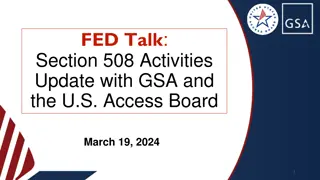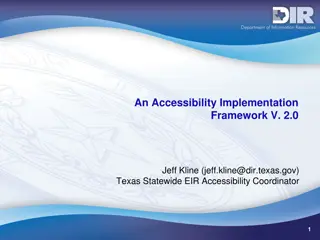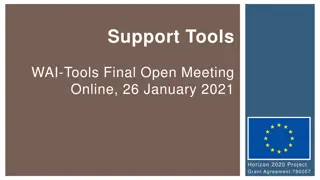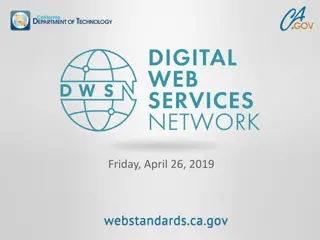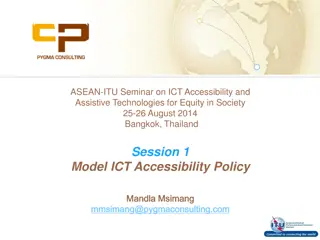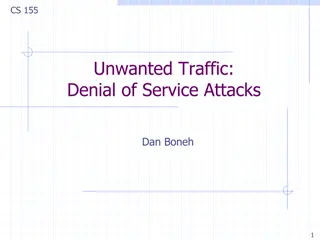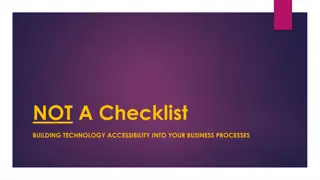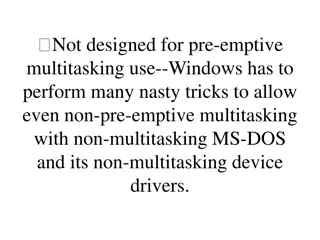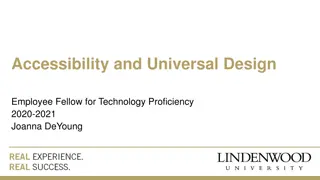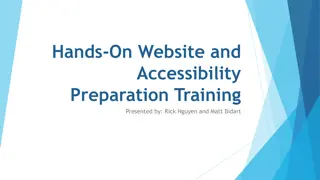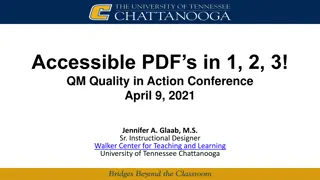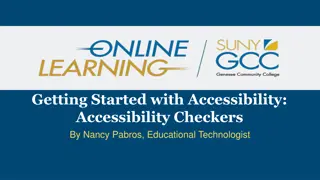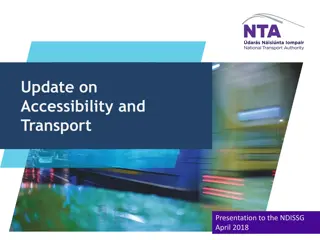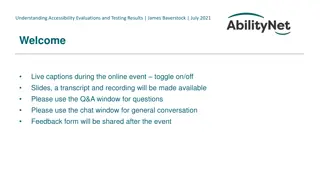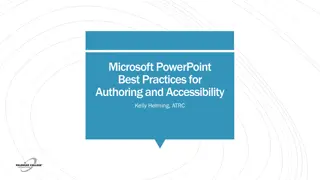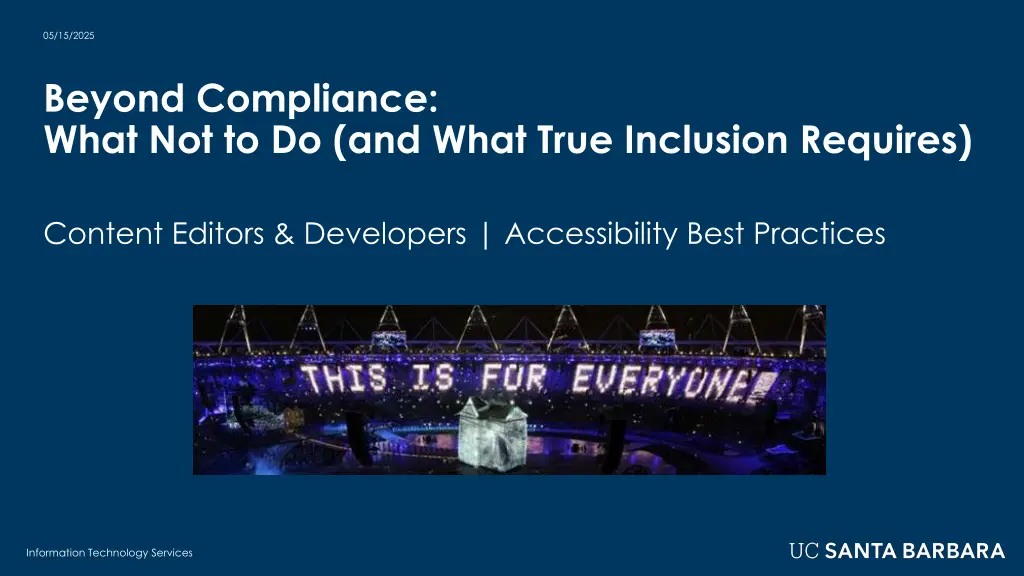
Inclusive Web Design Best Practices and Accessibility Tips for Content Editors and Developers
Learn essential do's and don'ts for designing digital content with accessibility in mind from the start. Discover practical tips for content editors and developers to ensure inclusive design, keyboard compatibility, color contrast, and more. Enhance user experience and reach a diverse audience through thoughtful and inclusive web design practices.
Download Presentation

Please find below an Image/Link to download the presentation.
The content on the website is provided AS IS for your information and personal use only. It may not be sold, licensed, or shared on other websites without obtaining consent from the author. If you encounter any issues during the download, it is possible that the publisher has removed the file from their server.
You are allowed to download the files provided on this website for personal or commercial use, subject to the condition that they are used lawfully. All files are the property of their respective owners.
The content on the website is provided AS IS for your information and personal use only. It may not be sold, licensed, or shared on other websites without obtaining consent from the author.
E N D
Presentation Transcript
05/15/2025 Beyond Compliance: What Not to Do (and What True Inclusion Requires) Content Editors & Developers | Accessibility Best Practices Information Technology Services Information Technology Services
Dont Treat Accessibility as an Afterthought Do: Design & Write with Accessibility in Mind from the Start Practical Tips: Accessibility should be baked into design, development, and content creation not patched on later. Content editors: Use clear, concise language, proper heading structures, and alternative text for images. Developers: Implement semantic HTML, keyboard navigation, and ARIA roles only when necessary not as a substitute for correct markup. Information Technology Services
Don't assume all users interact with your design the same way A set of posters on how to design for accessibility Do: Design for users... on the autistic spectrum of screen readers with low vision with dyslexia with physical or motor disabilities Resource Guide : Dos and don'ts on designing for accessibility who are deaf or hard of hearing with anxiety Information Technology Services
Dont Rely Solely on Mouse & Touch Interactions DO: Ensure Keyboard & Assistive Tech Compatibility Practical Tips: Many users rely on keyboard navigation, screen readers, and switch devices to interact with content. Content editors: Ensure links and buttons are meaningful (e.g., avoid "Click here"). Developers: Test with tab navigation, focus indicators, and screen readers to guarantee usability. Information Technology Services
DONT: Convey Meaning Through Color Alone DO: Use Sufficient Color Contrast & Multiple Cues Practical Tips: Colorblind users and those with low vision need strong contrast and additional indicators like text labels or icons. Avoid using red text alone for errors; pair it with text instructions. Implement WCAG contrast ratios and provide visible indicators for form validation. Information Technology Services
DONT: Convey Meaning Through Color Alone DO: Use Sufficient Color Contrast & Multiple Cues Practical Tips: Error Summary at the Top - Provide a clear, focusable summary listing all validation errors; each item should link to the related field. Inline Error Messages - Place descriptive error messages directly next to or below the affected fields. Linear Layouts for Low Vision Users - Stack fields vertically and avoid side-by-side inputs to support users navigating with magnification or narrow focus ( straw test ). Information Technology Services
Dont Leave Multimedia & Images Inaccessible Do: Provide Text Alternatives for Non-Text Content Practical Tips: Every image, video, and infographic should have an alternative for those who can t see it. Write descriptive alt text and captions for multimedia. Ensure video players support captions, transcripts, and audio description, and that assistive tech can access them. Information Technology Services
DONT assume a PDF is accessible just because it was saved from Word. (or because it looks good) DO question whether a PDF is even the right format in the first place. Practical Tips: PDF Accessible by default Even well-structured source files often break during conversion. Remediation is complex Requires specialized tools, knowledge, and still often fails real users. Consider alternatives first HTML or accessible Word docs often provide better, more inclusive access. Article : The Problem With PDF Information Technology Services
DONT: Assume One-Time Compliance is Enough DO: Continuously Test & Improve Accessibility Practical Tips: Accessibility is an ongoing process technology, standards, and user needs evolve. Regularly review content for readability and accessibility. Conduct manual and automated testing (e.g., Siteimprove, Lighthouse, axe, NVDA, VoiceOver) and involve users with disabilities in testing or consider partnering with accessibility testing services such as Fable or Knowbility. uctechslack.png Join the UC Tech Slack Channel knowbility.png Learn about Knowbility fable.png Learn about Fable Information Technology Services

